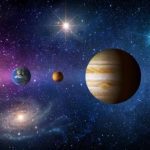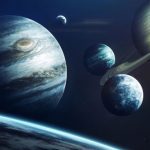 Technology
Technology  Technology
Technology  Humans
Humans 10 Everyday Human Behaviors That Are Actually Survival Instincts
 Animals
Animals 10 Animals That Humiliated and Harmed Historical Leaders
 History
History 10 Most Influential Protests in Modern History
 Creepy
Creepy 10 More Representations of Death from Myth, Legend, and Folktale
 Technology
Technology 10 Scientific Breakthroughs of 2025 That’ll Change Everything
 Our World
Our World 10 Ways Icelandic Culture Makes Other Countries Look Boring
 Misconceptions
Misconceptions 10 Common Misconceptions About the Victorian Era
 Mysteries
Mysteries 10 Strange Unexplained Mysteries of 2025
 Miscellaneous
Miscellaneous 10 of History’s Most Bell-Ringing Finishing Moves
 Technology
Technology Top 10 Everyday Tech Buzzwords That Hide a Darker Past
 Humans
Humans 10 Everyday Human Behaviors That Are Actually Survival Instincts
 Animals
Animals 10 Animals That Humiliated and Harmed Historical Leaders
Who's Behind Listverse?

Jamie Frater
Head Editor
Jamie founded Listverse due to an insatiable desire to share fascinating, obscure, and bizarre facts. He has been a guest speaker on numerous national radio and television stations and is a five time published author.
More About Us History
History 10 Most Influential Protests in Modern History
 Creepy
Creepy 10 More Representations of Death from Myth, Legend, and Folktale
 Technology
Technology 10 Scientific Breakthroughs of 2025 That’ll Change Everything
 Our World
Our World 10 Ways Icelandic Culture Makes Other Countries Look Boring
 Misconceptions
Misconceptions 10 Common Misconceptions About the Victorian Era
 Mysteries
Mysteries 10 Strange Unexplained Mysteries of 2025
 Miscellaneous
Miscellaneous 10 of History’s Most Bell-Ringing Finishing Moves
The 10 Largest Moons of Our Solar System
The night sky holds countless celestial wonders, but few are as captivating as the moons of our solar system. While Earth boasts just one moon, other planets have entire families of moons, each unique in its size, composition, and history. These natural satellites range from small, rocky chunks to massive, planet-like bodies with complex surfaces and even atmospheres.
The largest moons in our solar system are found orbiting the gas giants Jupiter, Saturn, Uranus, and Neptune. These enormous planets, far from the warmth of the Sun, host some of the most fascinating and mysterious moons we’ve ever observed. From icy surfaces cracked by tidal forces to volcanoes spewing sulfur, these moons are laboratories of extreme environments.
This list explores the ten largest moons in the solar system, ordered from smallest to largest, revealing their secrets and highlighting the discoveries made by astronomers and space probes over the years. Whether it’s Oberon’s icy solitude or Ganymede’s vast oceans, each moon tells a story of its planet’s past and hints at the broader mysteries of our cosmic neighborhood.
Related: 10 Groundbreaking Space Missions That Flew under the Radar
10 Oberon (Uranus)
Oberon, the outermost of Uranus’s major moons, is a frozen world of ice and rock, measuring 473 miles (761 kilometers) in diameter—about the size of Nebraska. Its desolate surface is marked by large craters and dark patches, hinting at ancient collisions. Voyager 2, the only spacecraft to visit Oberon in 1986, revealed a barren landscape with towering cliffs and icy plains. Despite its distance from Earth and extreme cold, Oberon remains a tantalizing object of study for astronomers.
What makes Oberon particularly intriguing is its mythological namesake. Named after the king of the fairies in Shakespeare’s A Midsummer Night’s Dream, it symbolizes the blending of art and science. While the icy patches and shadowy regions suggest a long history of impacts, the exact processes shaping its surface remain unclear. Future missions could uncover hidden geological activity beneath its icy crust. With surface gravity too weak to support humans and temperatures far below freezing, Oberon poses significant challenges for exploration. Still, its enigmatic nature keeps it high on the list of celestial bodies worth revisiting.[1]
9 Rhea (Saturn)
Rhea, Saturn’s second-largest moon, is a cratered, icy sphere resembling a miniature version of Earth’s Moon. At 475 miles (764 kilometers) in diameter, it is slightly larger than Oberon. Its heavily cratered surface tells a story of countless impacts over billions of years. NASA’s Cassini spacecraft revealed that Rhea’s surface is one of the coldest in the solar system, with temperatures plunging to -281°F (-174°C).
One of Rhea’s most striking features is its simplicity. Unlike many other moons, it lacks significant geological activity. Its gray surface, scarred by craters and fractures, hints at a moon that has been geologically dead for eons. Yet, its quiet demeanor belies its importance. Studying Rhea offers insights into the history of the Saturnian system and the icy moons that orbit beyond it. With its low gravity and harsh conditions, Rhea is not a hospitable destination for astronauts. However, its similarities to our Moon make it an excellent subject for comparative studies.[2]
8 Titania (Uranus)
Titania, Uranus’s largest moon, spans 1,000 miles (1,609 kilometers) across and is a world of icy contrasts. Like Oberon, Titania’s surface is a mixture of bright ice patches and darker regions, but it is significantly larger and more dynamic. Discovered in 1787 by William Herschel, Titania has captured the imagination of astronomers for centuries.
Voyager 2 images revealed a mysterious crater and a network of canyons and fault lines, suggesting past geological activity. Titania’s ice could potentially be a source of water for future missions, but its frigid surface and weak gravity pose immense challenges for human exploration. Named after the queen of the fairies in A Midsummer Night’s Dream, Titania continues to inspire dreams of what lies beneath its icy crust. Could there be subsurface oceans? Only a dedicated space mission to Uranus could reveal the answers.[3]
7 Triton (Neptune)
Triton is not only Neptune’s largest moon but also one of the most unique in the solar system. At 1,681 miles (2,706 kilometers) in diameter, it stands out for its retrograde orbit—moving in the opposite direction of Neptune’s rotation, a clue that it was likely captured by Neptune’s gravity. Voyager 2’s 1989 flyby revealed an otherworldly landscape, including nitrogen geysers and a surface coated with pink and green icy crystals.
This moon’s active geology is driven by tidal forces that keep its interior warm. Ice volcanoes on Triton release nitrogen vapor, creating a thin atmosphere and adding to its visual appeal. Despite its allure, Triton’s extreme cold and isolation make it an unlikely destination for human exploration. However, its dynamic surface makes it a prime candidate for robotic missions aimed at understanding the processes shaping icy moons.[4]
6 Europa (Jupiter)
Europa, one of Jupiter’s four largest moons, has long fascinated scientists with its potential to harbor life. Measuring 1,940 miles (3,130 kilometers) in diameter, Europa’s icy surface is crisscrossed with red streaks caused by tidal forces from Jupiter’s immense gravity. Beneath this cracked exterior lies a global ocean, kept liquid by heat from the moon’s interior.
Europa’s subsurface ocean has sparked speculation about the possibility of extraterrestrial life, similar to deep-sea ecosystems on Earth. NASA has proposed missions to drill through Europa’s ice, aiming to uncover whether simple organisms could survive in its hidden depths. For now, Europa remains one of the most promising candidates for finding life beyond Earth.[5]
5 Earth’s Moon
Earth’s Moon is the most familiar celestial body on this list, and the only one humans have set foot on. At 2,159 miles (3,474 kilometers) in diameter, it is the fifth-largest moon in the solar system. The Apollo missions of the 1960s and ’70s not only revolutionized space exploration but also provided humanity with its first close-up views of another world. From the iconic “Blue Marble” photo to the discovery of lunar rocks, the Moon has shaped our understanding of planetary science.
Recent studies suggest that the Moon’s craters may harbor ice, a valuable resource for future missions. Its surface, a mix of gray plains and impact craters, reveals a history of asteroid impacts and volcanic activity. The Moon’s low gravity and lack of atmosphere pose challenges for human habitation, but its proximity to Earth makes it a logical stepping stone for further exploration. With ongoing plans for lunar bases, Earth’s Moon continues to inspire dreams of a sustainable human presence beyond our planet.[6]
4 Io (Jupiter)
Io is a fiery spectacle of volcanic activity and the most geologically active body in the solar system. At 2,260 miles (3,640 kilometers) in diameter, it is slightly larger than Earth’s Moon. Unlike other moons, Io’s surface is constantly reshaped by its hundreds of active volcanoes, which spew sulfur and molten rock. This ceaseless activity gives Io its distinctive “pizza-like” appearance, with patches of yellow, red, and orange.
Io’s intense volcanic activity is powered by tidal forces from Jupiter and neighboring moons Europa and Ganymede, which create friction and heat in Io’s interior. While fascinating, Io’s environment is extremely hostile. Jupiter’s powerful radiation belts make it a deadly destination for humans, and the volcanic eruptions would destroy any unprotected lander. Robotic missions remain the best way to study this volatile moon, which offers insights into geological processes that might also occur on young planets.[7]
3 Callisto (Jupiter)
Callisto, the second-largest moon of Jupiter, is a stark contrast to its volcanic sibling Io. With a diameter of 3,000 miles (4,800 kilometers), it is nearly the size of Mercury. Its surface is the most heavily cratered in the solar system, a testament to its ancient history. Callisto’s icy, black surface is punctuated by bright white spots, indicating water ice deposits.
Orbiting farther from Jupiter than Io, Callisto avoids the intense radiation that plagues its inner moons, making it a more feasible target for future human exploration. NASA has proposed using Callisto as a base for missions to Jupiter and beyond. While its geology is less dynamic than Io’s, Callisto’s ancient surface and potential subsurface ocean offer valuable clues about the early solar system.[8]
2 Titan (Saturn)
Titan, Saturn’s largest moon, is a world of mystery and wonder. At 3,200 miles (5,150 kilometers) in diameter, it is the second-largest moon in the solar system and the only one with a thick atmosphere. Titan’s atmosphere, rich in nitrogen and methane, creates a hazy orange glow and supports a methane cycle similar to Earth’s water cycle.
The Cassini mission and its Huygens probe provided groundbreaking data on Titan’s surface, revealing lakes and rivers of liquid methane and ethane. These hydrocarbon seas make Titan one of the most Earth-like bodies in the solar system, albeit with temperatures cold enough to freeze water solid. While its surface is inhospitable, Titan’s thick atmosphere could protect future missions from radiation, making it a compelling candidate for exploration. Its complex chemistry and dynamic weather patterns make Titan a key target in the search for extraterrestrial life.[9]
1 Ganymede (Jupiter)
Ganymede, the largest moon in the solar system, is a giant among giants. Measuring 3,275 miles (5,270 kilometers) in diameter, it is larger than the planet Mercury. Ganymede is unique in many ways: it has its own magnetic field, a thin oxygen atmosphere, and a diverse surface of dark and light regions.
NASA’s Galileo spacecraft provided detailed images of Ganymede, revealing a landscape of icy plains, grooves, and craters. Beneath its frozen crust lies a vast subsurface ocean, potentially holding more water than all of Earth’s oceans combined. Ganymede’s size and features make it almost a planet in its own right, and its magnetic field offers clues about its interior structure.
While Ganymede’s harsh environment makes it a challenging destination, it remains a key focus for future missions. The European Space Agency’s JUICE mission, set to explore Jupiter’s moons in the 2030s, aims to unlock the secrets of this icy giant. Ganymede’s blend of size, complexity, and potential habitability ensures its place as the most fascinating moon in the solar system.[10]








